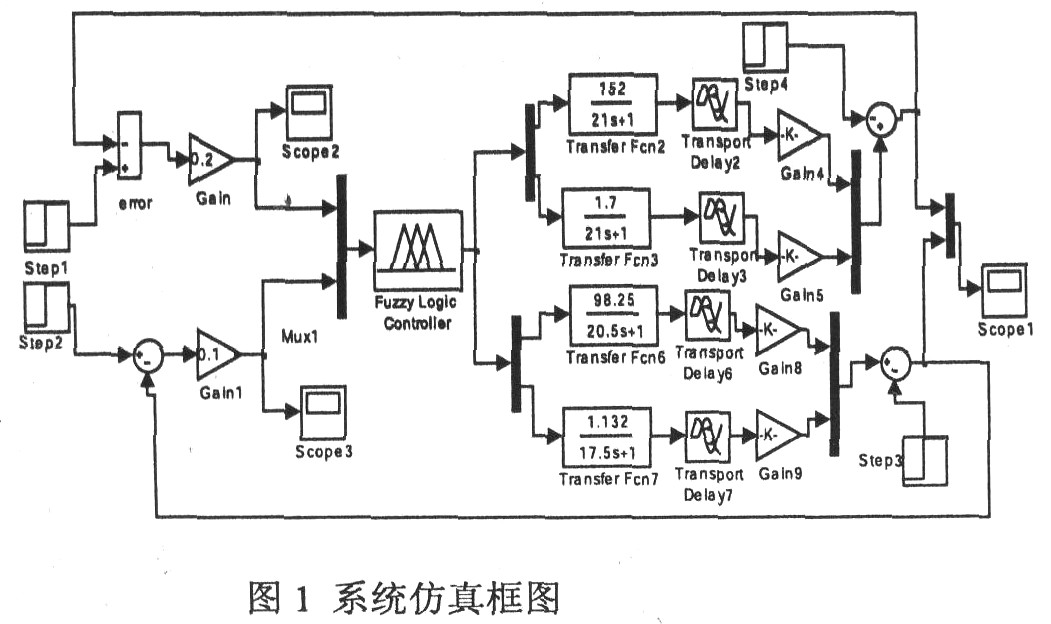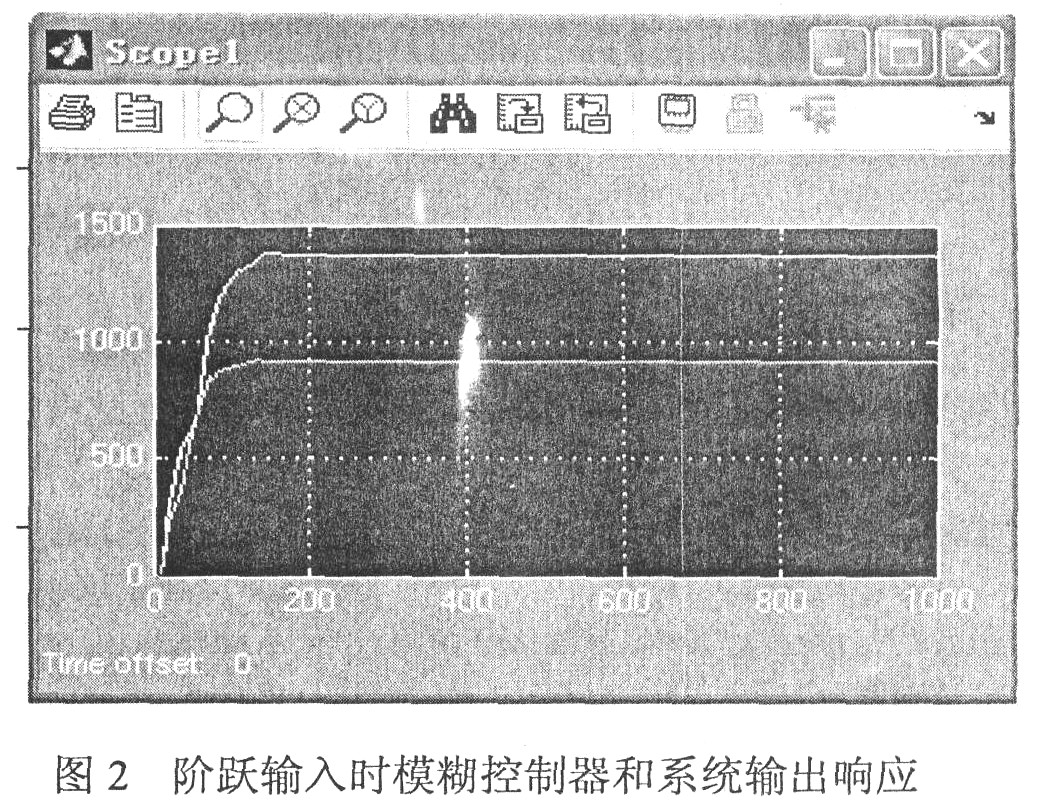0 Introduction
The cement production process is a physical and chemical reaction process with the characteristics of large inertia, pure lag, and nonlinearity. The system operation conditions are complex and changeable. According to statistics, there are about 3,000 rotary kilns of various types in the country. The biggest problem among them is high energy consumption and low thermal efficiency. It is an important energy-consuming equipment in my country's industry. Although there are many reasons for the high energy consumption and low efficiency of rotary kilns, one of the important factors is that the detection and control methods in the working process of rotary kilns are still very backward. Most of them still rely on the work experience of on-site operators to judge the thermal state in the kiln to adjust the feed fuel. The production efficiency is low, the energy consumption is high, the level of automation control is low, the quality is unstable, and it is difficult to achieve the control requirements and effects. Traditional PID control is one of the earliest developed control strategies. Due to its simple algorithm, good robustness and high reliability, it is widely used in industrial process control such as rotary kilns. However, the nonlinearity, time-varying and difficult to establish mathematical models of the cement production process determine that conventional PID controllers usually cannot achieve ideal control effects. In actual production sites, due to the complicated parameter setting methods, conventional PID controller parameters are often poorly set, performance is poor, and the adaptability to the controlled process is poor. The introduction of fuzzy control theory provides a new control method. This method takes the fuzzy controller composed of microcomputers as the core and simulates the thinking mode of the human brain as the basic starting point. It does not require us to accurately describe the control model, and can well solve the control problems of nonlinear, large time lag, and variable parameter objects.
1 Analysis of rotary kiln production process control
In the cement production process, the rotary kiln is responsible for the final decomposition of materials and the formation of clinker, and is the key equipment for cement clinker calcination. The temperature control of the rotary kiln has a significant impact on the stability, high yield and energy saving of the entire cement production line. In actual production, there are many monitoring parameters for cement rotary kilns, many of which are interrelated and causal, and the control is also relatively complex. According to the on-site investigation, it can be found that the stability of the rotary kiln temperature mainly depends on four parameters:
1) If the temperature of the firing zone is too low, the clinker quality will be poor; if the temperature is too high, the kiln body will overheat, shortening the life of the refractory bricks and even the life of the rotary kiln.
2) If the temperature at the kiln tail is controlled too low, it will be detrimental to heat transfer and chemical reaction in the kiln. If the temperature is too high, the viscosity of the material will increase, which will easily cause crusting or blockage in the kiln tail smoke chamber and ascending pipe.
3) Coal feeding amount Increasing the fuel consumption can increase the burning zone temperature and reduce the oxygen content; reducing the fuel consumption can reduce the burning zone temperature and increase the oxygen content. Too much or too little fuel will affect the burning quality.
4) The speed of the main exhaust fan is mainly used to change the secondary wind speed, ensure the coordination of air and coal and the oxygen content; it is also used to change the temperature distribution in the kiln and control the temperature at the kiln tail.
From the above analysis, we can see that there are many factors that affect the rotary kiln control system, among which the firing zone temperature and the kiln tail temperature are two main factors, and the speed of the main exhaust fan and the speed of the rotary kiln also have a certain influence on it. There is a complex coupling relationship between the above four parameters, and it is difficult to establish an accurate mathematical model to describe the process. Moreover, in actual operation, the control of the kiln depends entirely on the operator's proficiency, so the production is unstable, the efficiency is low, and the energy consumption is serious. Therefore, fuzzy control technology is proposed to realize automatic control to achieve the purpose of improving productivity and energy saving.
2 Design of fuzzy control system of rotary kiln
2.1 Design of fuzzy controller
In the production process of cement rotary kiln, based on cement calcining process, the stability of burning zone temperature and kiln tail gas temperature is an important sign to ensure the stability of thermal system of cement rotary kiln and produce high-quality cement clinker. Conventional fuzzy controllers mostly adopt one-dimensional second order, and use the deviation and deviation change rate of burning zone temperature as input, and fuel consumption as output control quantity. Considering that there are many influencing factors in reality, only using burning zone temperature as input quantity cannot fully describe the situation of rotary kiln. Therefore, the control scheme adopts coal feeding amount and main exhaust fan speed as controlled quantity, and burning zone temperature and kiln tail temperature as control quantity. A two-dimensional first-order fuzzy controller with double input and double output is designed. Because the speed of rotary kiln remains basically unchanged, the influence of rotary kiln speed is not considered for the time being.
The domain of the fuzzy controller input variable firing zone temperature is [-50℃, 50℃], and the fuzzy subset is {negative large, negative medium, negative small, negative zero, zero, positive zero, positive small, positive medium, positive large}, denoted as {NBl, NMl, NSl, NZ1, ZO1, PZ1, PS1, PM1, PB1}, and the membership function adopts triangular function.
The domain of kiln tail temperature is [-25℃, 25℃], the fuzzy subset is {negative large, negative small, zero, positive small, positive large}, recorded as {NB2, NS2, Z02, PS2, PB2}, and the membership function uses a triangular function. The domain of output coal feeding amount is [8.1, 10.3], the fuzzy subset is {negative large, negative medium, negative small, negative zero, zero, positive zero, positive small, positive medium, positive large}, recorded as {NB3, NM3, NS3, Z03, PS3, PM3, PB3}, and the membership function uses a triangular function.
The domain of the output main exhaust fan speed is [720, 880], the fuzzy subset is {negative large, negative small, zero, positive small, positive large}, denoted as {NB4, NS4, Z04, PS4, PB4}, and the membership function adopts triangular function.
2.2 Establishment of fuzzy rule base
The core of fuzzy controller design is to establish a fuzzy rule base. The commonly used method is to make appropriate modifications to the control rules based on the operator's experience and on-site control conditions. The overall principle of rule selection is: when the error is large, the control amount is selected to eliminate the error. When the error is small, the control amount should be selected to prevent overshoot and the stability of the system should be the main consideration. The resulting control rule table is shown in Table 1.

3 MATLAB simulation of fuzzy control system
3.1 Establishment of simulation module
Enter the simulink command in the command window of MATLAB. In the simulink environment, combine the other functional modules provided by the system to complete the fuzzy control system design. Before simulation, load the file hzykz01.fis in MATLAB into the fuzzy controller module. The simulation structure diagram is shown in Figure 1. Set the simulation time, step size and other parameters, and start the simulation. At the end of the simulation, the simulation results can be directly observed through the oscilloscope.

3.2 Simulation results and analysis
As can be seen from Figure 2, compared with simple PID control, fuzzy control has faster response speed and better tracking performance. Compared with PID control system, fuzzy control system has the advantages of short adjustment time, no overshoot, short recovery time, good followability and strong anti-interference ability.

4 Conclusion
The temperature control system is composed of fuzzy control. The knowledge of fuzzy set theory, fuzzy language variables and fuzzy logic reasoning is applied to the control method to simulate the fuzzy thinking method of human beings. The simulation proves that the control speed is fast, the overshoot is small, and the stability is good. The control effect is significantly better than the traditional control, which is beneficial to improve the production efficiency of the rotary kiln and reduce energy consumption.
Previous article:Video surveillance system software status and technical analysis
Next article:Application of Hollysys DCS system in Huabei Oilfield
Recommended ReadingLatest update time:2024-11-17 12:37

- Molex leverages SAP solutions to drive smart supply chain collaboration
- Pickering Launches New Future-Proof PXIe Single-Slot Controller for High-Performance Test and Measurement Applications
- CGD and Qorvo to jointly revolutionize motor control solutions
- Advanced gameplay, Harting takes your PCB board connection to a new level!
- Nidec Intelligent Motion is the first to launch an electric clutch ECU for two-wheeled vehicles
- Bosch and Tsinghua University renew cooperation agreement on artificial intelligence research to jointly promote the development of artificial intelligence in the industrial field
- GigaDevice unveils new MCU products, deeply unlocking industrial application scenarios with diversified products and solutions
- Advantech: Investing in Edge AI Innovation to Drive an Intelligent Future
- CGD and QORVO will revolutionize motor control solutions
- Innolux's intelligent steer-by-wire solution makes cars smarter and safer
- 8051 MCU - Parity Check
- How to efficiently balance the sensitivity of tactile sensing interfaces
- What should I do if the servo motor shakes? What causes the servo motor to shake quickly?
- 【Brushless Motor】Analysis of three-phase BLDC motor and sharing of two popular development boards
- Midea Industrial Technology's subsidiaries Clou Electronics and Hekang New Energy jointly appeared at the Munich Battery Energy Storage Exhibition and Solar Energy Exhibition
- Guoxin Sichen | Application of ferroelectric memory PB85RS2MC in power battery management, with a capacity of 2M
- Analysis of common faults of frequency converter
- In a head-on competition with Qualcomm, what kind of cockpit products has Intel come up with?
- Dalian Rongke's all-vanadium liquid flow battery energy storage equipment industrialization project has entered the sprint stage before production
- New breakthrough! Ultra-fast memory accelerates Intel Xeon 6-core processors
- New breakthrough! Ultra-fast memory accelerates Intel Xeon 6-core processors
- Consolidating vRAN sites onto a single server helps operators reduce total cost of ownership
- Consolidating vRAN sites onto a single server helps operators reduce total cost of ownership
- Allegro MicroSystems Introduces Advanced Magnetic and Inductive Position Sensing Solutions at Electronica 2024
- Car key in the left hand, liveness detection radar in the right hand, UWB is imperative for cars!
- After a decade of rapid development, domestic CIS has entered the market
- Aegis Dagger Battery + Thor EM-i Super Hybrid, Geely New Energy has thrown out two "king bombs"
- A brief discussion on functional safety - fault, error, and failure
- In the smart car 2.0 cycle, these core industry chains are facing major opportunities!
- 【Showing goods】The third wave
- High-speed DAC
- Why are MLCC measurements either low or high?
- 【RT-Thread Reading Notes】5 Chapter Reading Notes
- C6000 C Compiler
- Showing off the i.MX6 development board
- Repost - Tesla battery violent disassembly video
- The SMT Advisory Expert Committee of the Advisory Working Committee of the China Electronics Society was established
- How to port uCOS-II to LPC17XX
- X-NUCLEO-IKS01A3 sensor driver transplantation based on NUCLEO-L011K4

 MATLAB and FPGA implementation of wireless communication
MATLAB and FPGA implementation of wireless communication
















 京公网安备 11010802033920号
京公网安备 11010802033920号